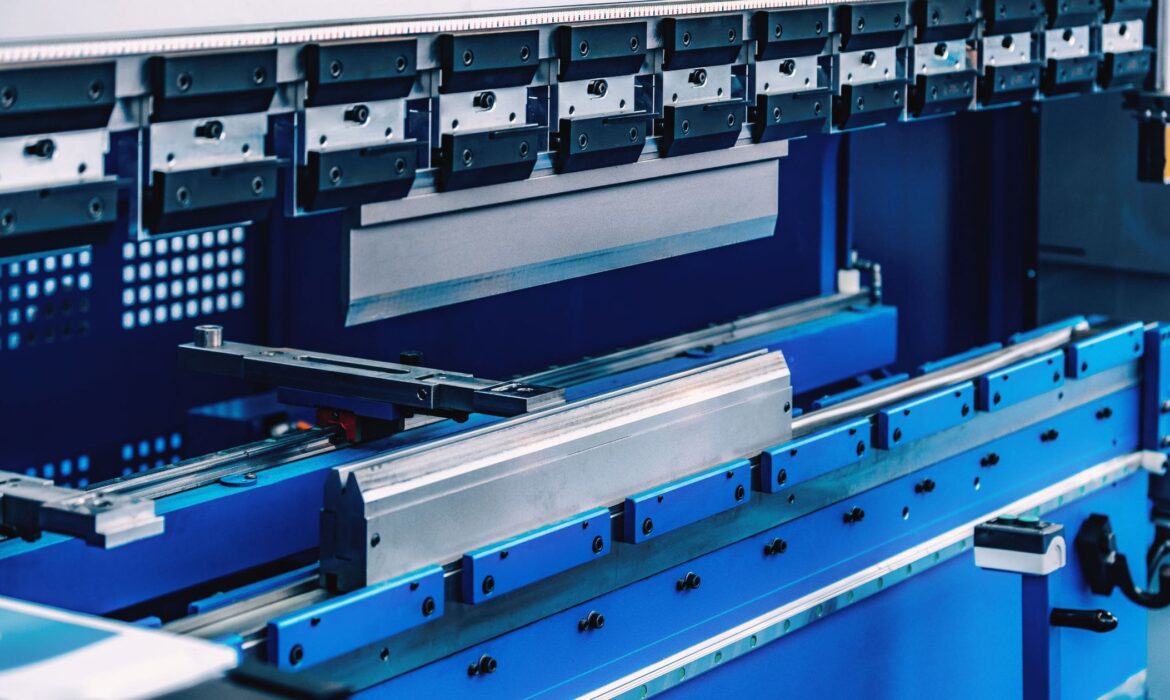
Press brakes are essential for bending and shaping sheet steel in metalworking and fabrication. Understanding the exclusive forms of press brakes and their benefits and downsides is crucial in deciding on the right system for your needs.
What is a Press Brake?
A press brake is a system that bends and forms sheet steel using force via a punch-and-die setup. The system entails clamping the sheet metal between a punch and a die and then using pressure to create the desired bend. Press brakes are available in various types, each proper to precise programs and substances.
Common Types of Press Brakes
1. Hydraulic Press Brakes
Definition and Operation
Hydraulic press brakes use cylinders to apply pressure, which bends the sheet metal. These machines are recognized for their versatility and precision. Hydraulic machines apply smooth pressure, which is ideal for complex and precise bending jobs.
Advantages
High Precision: Hydraulic press brakes offer terrific accuracy, making them appropriate for precise work.
Versatility: Capable of dealing with various substances and thicknesses.
Ease of Use: Often includes superior controls and automation functions for simplified operation.
Disadvantages
Cost: Typically extra high-priced than mechanical press brakes.
Maintenance: Requires everyday preservation of hydraulic components to make sure the right features are.
2. Mechanical Press Brakes
Definition and Operation
Mechanical press brakes use a mechanical flywheel and crank machine to use bending pressure. The mechanism entails a chain of gears, levers, and cams to switch energy from the motor to the punch.
Advantages
Cost-Effective: Generally cheaper in comparison to hydraulic press brakes.
Durability: Fewer moving components can cause longer carrier life with less upkeep.
Speed: Often faster in operation because of the mechanical machine.
Disadvantages
Less Precision: This may provide less accuracy than hydraulic models.
Limited Flexibility: Generally suited for more manageable, less complex bending responsibilities.
3. Electric Press Brakes
Definition and Operation
Electric press brakes use servo-electric motors to manipulate the bending procedure. This type of press brake is known for its strength, efficiency, and unique management.
Advantages
Energy Efficiency: Consumes less strength compared to hydraulic press brakes.
Precision: Offers high accuracy and repeatability, which is best for complicated bends.
Low Noise: Operates quietly compared to hydraulic structures.
Disadvantages
Initial Cost: Higher upfront funding because of the superior era.
Complexity: Requires specialized understanding of operation and renovation.
4. Hybrid Press Brakes
Definition and Operation
Hybrid press brakes combine hydraulic and electric technology to leverage both benefits. They use hydraulic power for bending, and electric motors control the process for precision and efficiency.
Advantages
Efficiency: Offers stability of strength, efficiency, and high precision.
Versatility: Capable of coping with numerous bending tasks with extra control.
Reduced Maintenance: Combines the excellent factors of hydraulic and electric-powered structures.
Disadvantages
Complexity: It can be more complicated to operate and hold due to the aggregate of technologies.
Cost: Typically more high-priced than simply hydraulic or mechanical press brakes.
Choosing the Right Press Brake for Your Needs
When deciding on a press brake, recall the subsequent factors:
1. Material and Thickness
Different press brakes take care of numerous materials and thicknesses in another way. A hydraulic press brake is a good choice if you often work with thick metal sheets. It has the power to handle tough jobs that require a lot of force.
2. Precision Requirements
Electric press brakes are perfect for precise work. Hydraulic press brakes with CNC are also great. They provide the accuracy needed for complicated designs and tight tolerances.
3. Budget
Your price range will considerably have an impact on your choice. Mechanical press brakes are affordable. They may not be as precise as other models. Evaluate the change-offs among preliminary price and lengthy-time period overall performance.
4. Maintenance and Operating Costs
Consider the renovation requirements and running fees of every sort of press brake. Hydraulic press brakes need more maintenance because of their fluid-filled parts. Electric press brakes are a cost-effective option with lower operating costs.
5. Space and Installation
Ensure that the clicking brake you pick out suits inside your workshop space. Some models, such as substantial hydraulic press brakes, require extra area and setup issues.
Conclusion
Know the different types of press brakes and their advantages. Understand their disadvantages too, to make an informed decision. Each type of press brake (hydraulic, mechanical, electric, or hybrid) has its benefits. They also have limitations, so choose the best fit your needs. Consider what materials you’ll be working with. Think about how precise you need the press brake to be. Set a budget for the press brake. Choose one that fits your needs and is easy to maintain.
In precise, whether you’re looking for precision, value-effectiveness, or electricity performance, there may be a press brake that suits your needs. Tools like MIHARMLE CNC can offer extra automation and management options, enhancing the capabilities of your press brake device.



